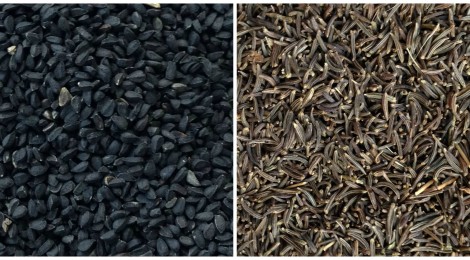
Indian Cooking FAQ — Questions from our readers! Black cumin seeds (Black Jeera) v. Nigella seeds (Kalonji)

Left: nigella seeds (also known as kalonji) and Right: black cumin (also known as black jeera and different from regular/white cumin)
Dear Big Apple Curry,
I got confused in the Chicken with 40 Garlic Cloves (December 2013) when you wrote:
“At the 401 level you are becoming a real pro and will have to visit an Indian grocer or specialty store to buy spices (such as black cumin seeds and nigella seeds) that you won’t be able to find easily at your local supermarket.”
Thinking that black cumin and nigella were two different types. Aren’t black cumin, nigella and kalonji the same seed with different names?
And kalonji has a different name sometimes, known as onion seed I think. I saw it mentioned as something you sprinkle on Afghan snowshoe bread.
Hope you had a nice Super Bowl. Keep up the great work.
=======================================
Dear Reader!
Yes, it can be confusing, especially with so many different names in different languages, in fact (English, Hindi, Urdu) — so here’s the deal: black cumin is a separate spice from kalonji (aka nigella seed) in all dimensions — look, feel, smell, and taste.
Black Cumin aka Black Jeera
Black cumin comes from Bunium bulbocastanum, a plant species in the Apiaceae family, and is sometimes called blackseed or black caraway. If you picture white cumin seeds (which are used frequently in Indian, Mexican, Middle Eastern cuisines, to name but a few), black cumin seeds are much thinner and feathery looking, and the taste and aroma is smoky with hints of sweetness and citrus.
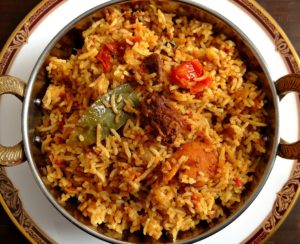
I use black cumin in dishes like this lamb biryani and my Indian-style Chicken with 40 Garlic Cloves
Kalonji aka Nigella Seeds
Kalonji or nigella seeds, on the other hand, come from Nigella sativa — an annual flowering plant that produces fruit that contains numerous seeds. Nigella seeds look like small bits of black coal (the easiest way for me to describe it!) and also impart a smoky taste but sharper (no hints of sweetness). You can really taste the difference if these are omitted from a dish — I use kalonji in dishes like baingan burtha.
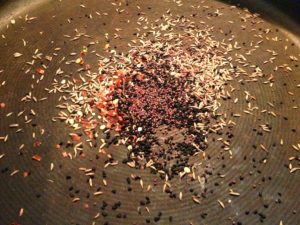
See those black seeds that look like bits of coal in the center of the pan and along the bottom? Those are nigella seeds, also known as kalonji.
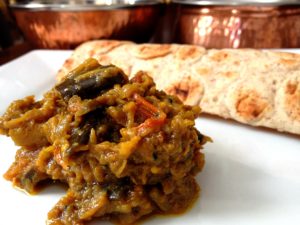
Baingain burtha, North India’s signature eggplant dish simply wouldn’t get the same smokiness without the addition of nigella seeds or kalonji and cooked slowly over a medium flame.
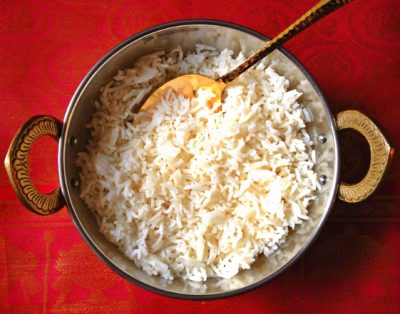

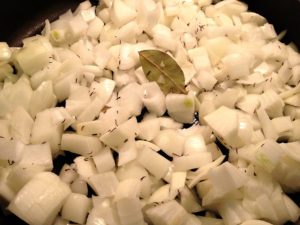
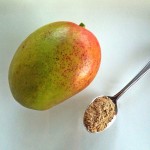
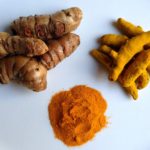
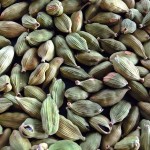
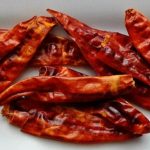
at childhood in my home town i have seen and used black jeera which was black in colour shape is slight looks like white jeera long grain but in many place people made me confuse showing kalonji and black jeera both same ????????????!!!!!!!!!!
Hello Reena!
I’m so happy you visited Big Apple Curry. You’re right, people often think kalonji (nigella seeds) and black/kala jeera (black cumin seeds) are the same thing, but they’re not. In fact, it’s such a frequently asked question by our readers, that’s the reason I wrote this post. Sometimes I wonder if it’s because of the first three letters (KAL) in both. Online, I’ve seen a photo of kalonji (nigella seeds) used to describe kala jeera, which makes this confusing!
With best wishes,
Ina
Thanks for this clarification! Good job with the explanation 🙂
Hello Hina,
Thank you for visiting us and this page! You’re most welcome, it’s tricky to tell the finer differences between Indian herbs and spices sometimes, but as you can see in this case, there are some clear comparisons. Let us know if you cook anything with black cumin or nigella seeds!
With best wishes, Ina
Hi could you please tell me benifits of kalonji oil is it save to take the oil for somone who is trying to become pregnant?
Thank you ?
Elmira, hello!
I don’t know firsthand if kalonji oil is safe for someone who is trying to become pregnant. I would take the definition of kalonji with you to your doctor/OB-GYN and ask him or her for their professional opinion before taking it. This is always the right step because there are so many online opinions about the safety (and promotion) of certain foods for fertility.
Definition of Kalonji: Nigella sativa (black-caraway, also known as nigella or kalonji), often called black cumin
Best of luck to you!
With warmest wishes,
Ina
Just visited your page Nigella (aka Kalonji) which was just the information I needed. I can’t believe it was that easy to get the information I wanted.
I have signed up for regular newsletters – THANKYOU
Hello Yvonne!
That is terrific! I love research, and I love it even more when I find exactly what I’m looking for 🙂 There are so many spices and herbs in different cuisines around the world, that it can get confusing. I’m delighted to hear you found it useful and that you’ve signed up to receive Big Apple Curry updates! Did you end up cooking with black cumin or nigella seeds?
With best wishes,
Ina